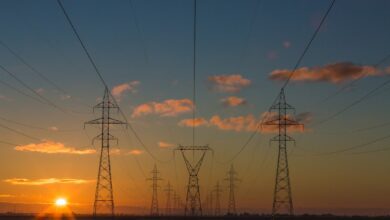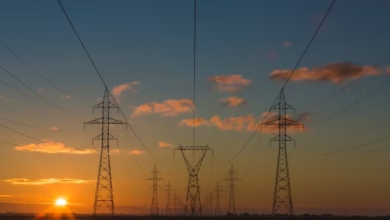Maximizing Energy Efficiency: Techniques and Technologies for a Sustainable Energy Transition

As the world grapples with the pressing challenges of climate change and dwindling fossil fuel reserves, the focus on energy efficiency has never been more critical. By implementing effective techniques and harnessing advanced technologies, we can significantly reduce energy waste and pave the way for a sustainable future. This article delves into the multifaceted realm of energy efficiency, exploring essential methods and technologies that combat energy waste while integrating renewable energy sources, such as solar power, wind energy, and hydropower.
We will examine how innovations in energy storage and smart grids are revolutionizing energy markets, enhancing energy security, and facilitating a smoother energy transition. Additionally, we will discuss the role of nuclear energy, bioenergy, and hydrogen energy in shaping energy policies and investments that prioritize climate resilience. From carbon capture strategies to distributed energy solutions, understanding these global energy trends and innovations is vital for a robust energy economy. Join us as we navigate through the key aspects of energy efficiency and its pivotal role in achieving a greener, more sustainable energy future.
- 1. Exploring Energy Efficiency: Key Techniques and Technologies to Combat Energy Waste
- 2. The Role of Renewable Energy in Achieving Sustainable Energy Efficiency
- 3. Innovations in Energy Storage and Smart Grids: Paving the Way for a Green Energy Transition
1. Exploring Energy Efficiency: Key Techniques and Technologies to Combat Energy Waste
Energy efficiency is a crucial aspect of the global energy transition, aimed at reducing energy waste and minimizing reliance on fossil fuels. As we explore energy efficiency, several key techniques and technologies emerge as vital components in combating energy waste and promoting sustainable practices.
One of the primary techniques to enhance energy efficiency is the implementation of smart grids. These advanced systems manage electricity demand more effectively and allow for real-time monitoring of energy consumption. By integrating renewable energy sources such as wind energy and solar power, smart grids can optimize the use of green energy while minimizing energy loss.
Energy storage technologies also play a significant role in improving energy efficiency. With advancements in battery storage, excess energy generated from renewable sources can be stored and used during peak demand periods, which enhances energy security and reduces the need for fossil fuel-based energy imports. Additionally, energy storage solutions support the increasing adoption of electric vehicles, enabling them to operate more efficiently.
In the context of energy markets, energy policy is critical to fostering energy innovations. Governments worldwide are increasingly investing in research and development (R&D) to explore new technologies that can enhance energy efficiency. This includes carbon capture technology, which aims to reduce emissions from fossil fuel usage, and the development of hydrogen energy as a clean fuel alternative.
The transition to renewable energy sources, such as hydropower and bioenergy, is essential for reducing dependence on fossil fuels. These resources not only provide cleaner energy options but also contribute to energy economics by creating new job opportunities and enhancing energy exports.
Thermal energy efficiency is another area where significant advancements can be made. By improving insulation in buildings and utilizing energy-efficient heating and cooling systems, we can reduce energy waste and lower carbon footprints.
As we navigate global energy trends and face the challenges posed by climate change, it is imperative that we adopt a holistic approach to energy efficiency. By embracing distributed energy systems and innovative solutions, we can ensure a sustainable future that prioritizes energy efficiency and supports the transition to a greener economy.
In conclusion, exploring energy efficiency through various techniques and technologies not only addresses energy waste but also aligns with broader goals of energy security, sustainability, and economic growth. As we move forward, continued investment in energy innovations and supportive energy policy will be essential in shaping a more efficient energy landscape.
2. The Role of Renewable Energy in Achieving Sustainable Energy Efficiency
The transition to renewable energy plays a pivotal role in enhancing energy efficiency and reducing reliance on fossil fuels. As global energy trends shift towards sustainability, integrating renewable sources like solar power, wind energy, hydropower, and bioenergy into our energy systems becomes essential. These green energy technologies not only provide cleaner alternatives but also contribute significantly to energy security and economic stability by diversifying energy markets and reducing dependency on energy imports.
One of the key aspects of renewable energy is its ability to work in harmony with energy storage solutions. Effective energy storage systems are crucial for managing the intermittent nature of renewable sources, ensuring that excess energy generated during peak production times can be stored and utilized during periods of high demand. This capability enhances overall energy efficiency by optimizing the use of available resources and reducing waste.
Incorporating renewable energy into our energy infrastructure also involves advancements in energy innovations such as smart grids and distributed energy systems. Smart grids facilitate improved energy management and distribution, allowing for real-time monitoring and control of energy flow, which helps minimize losses and improve efficiency. Distributed energy systems enable localized energy production, reducing transmission losses and enhancing resilience in energy transportation.
Investing in renewable energy technologies is not just about reducing carbon emissions; it also presents significant opportunities in energy economics. As the demand for clean energy grows, so does the potential for energy exports, positioning countries rich in renewable resources as leaders in the global energy market. Additionally, the development of hydrogen energy and electric vehicles offers promising pathways to further enhance energy efficiency and reduce environmental impacts.
In summary, the role of renewable energy in achieving sustainable energy efficiency is multifaceted. By leveraging innovations in energy R&D, implementing robust energy policies, and investing in clean technologies, we can pave the way for a more sustainable energy future that effectively addresses climate change while promoting economic growth and energy security.
3. Innovations in Energy Storage and Smart Grids: Paving the Way for a Green Energy Transition
Innovations in energy storage and smart grids are crucial components in the transition towards a green energy future. As the world pivots away from fossil fuels and seeks to harness renewable energy sources such as solar power, wind energy, and hydropower, effective energy storage solutions become increasingly important. Energy storage technologies, including batteries, pumped hydro, and thermal energy storage, play a vital role in managing the intermittent nature of renewable energy. These innovations help balance supply and demand, ensuring energy efficiency and reliability in energy markets.
Smart grids represent another significant advancement in energy technology. By integrating digital technology with the traditional electrical grid, smart grids enhance the management of energy distribution and consumption. They enable real-time monitoring and control of energy flows, facilitating the efficient use of distributed energy resources such as solar panels and wind turbines. This integration supports energy security and helps reduce waste, ultimately contributing to a more sustainable energy transition.
Furthermore, innovations in energy storage and smart grids are essential for accommodating the increasing adoption of electric vehicles (EVs). As EVs become more prevalent, the demand for energy will rise, necessitating advanced energy infrastructure to support charging needs without straining the grid. By optimizing energy transportation and storage, smart grids can help manage this growing demand, ensuring a seamless integration of EVs into the energy landscape.
The development of hydrogen energy and carbon capture technologies also complements these innovations, providing additional pathways to reduce greenhouse gas emissions and enhance energy efficiency. These efforts align with global energy trends and policies aimed at mitigating climate change impacts while promoting energy investments in renewable sources and energy R&D.
In summary, the ongoing innovations in energy storage and smart grids are pivotal in paving the way for a successful energy transition. They not only improve energy efficiency but also foster the growth of renewable energy, support the decarbonization of energy systems, and enhance energy security, ultimately benefiting both energy producers and consumers. As countries continue to invest in these technologies, the potential for a sustainable and resilient energy future becomes increasingly attainable.
In conclusion, enhancing energy efficiency is crucial in the fight against energy waste and the ongoing challenge of climate change. By implementing key techniques and technologies, we can significantly reduce our reliance on fossil fuels while promoting the use of renewable energy sources such as solar power, wind energy, and hydropower. The integration of innovations in energy storage and smart grids is paving the way for a seamless energy transition, enabling a more resilient and sustainable energy system.
As we navigate the complexities of global energy trends and policies, it is essential to invest in energy innovations that prioritize energy security and economic stability. The shift towards distributed energy resources, electric vehicles, and hydrogen energy represents a transformative approach to energy economics and investment. Furthermore, advancements in carbon capture technologies, coupled with a commitment to renewable energy, can help us mitigate the impacts of energy consumption on our planet.
Ultimately, the collaborative efforts of governments, businesses, and individuals are vital as we work towards a greener future. By recognizing the importance of energy efficiency and embracing the full spectrum of renewable energy options, we can ensure a sustainable energy landscape that supports both our current needs and future generations. Together, we can drive the change needed for a successful energy transition that not only addresses our energy imports and exports but also aligns with our climate goals.





